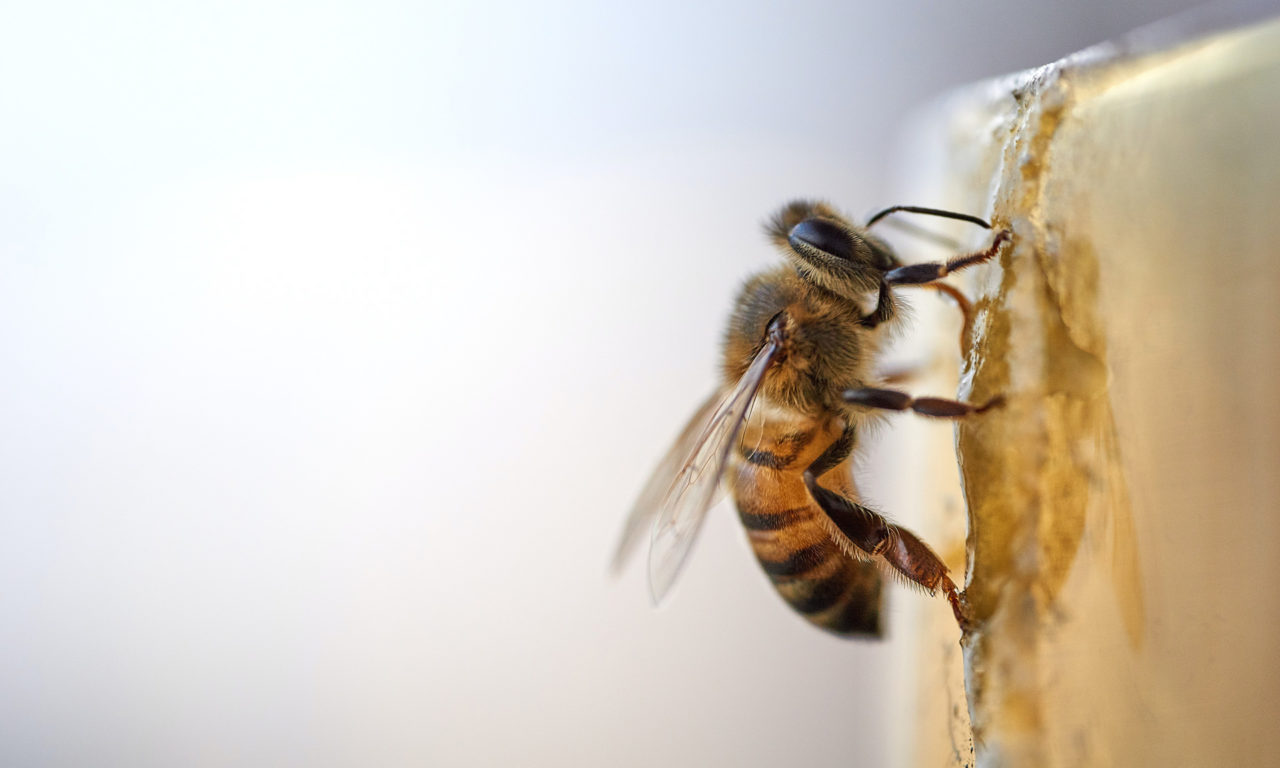The Boulder County Parks & Open Space Department offers grants for research on county open space lands each year. All proposals are reviewed by a team of resource specialists, and awarded research projects are monitored during their activities on open space. The following is a summary of a 2019 study conducted by Thomas Seth Davis, Ryleigh Gelles, Boris Kondratieff, and Camille Stevens-Rumann at Colorado State University in Ft. Collins. Their project focused on the effects of fire and thinning disturbances on biodiversity of wild bee communities in the Front Range of Colorado.
Executive Summary
This project examined the response of native pollinator communities to forb cover and diversity, as mediated by wildfire and wildfire mitigation treatments in ponderosa pine stands. At least 57 unique native bee species were detected in the study, and there was no evidence that forest thinning negatively impacted bee richness or abundance.
Study
Wild pollinator species, especially native bees, have important impacts on the assembly and genetic structure of plant communities, maintenance of ecological networks (Loveless and Hamrick 1984), and provisioning of ecosystem services (Kremen et al. 2007). For instance, an estimated 75% of crops rely on pollination by insects for sustained yield or crop quality (IPBES 2016), and wild pollinator communities are often equivalent or superior to managed bees for crop pollination services (Winfree et al. 2009). It is increasingly recognized that pollination services are driven by landscape factors, and proximity of natural ecosystems including forests and rangelands enhances pollination services in nearby agricultural systems (Ricketts et al. 2008, Carvalheiro et al. 2010). This is because natural systems often contain specific nesting and foraging resources that may drive site occupancy by native bees in adjacent land cover types (Walther-Hellwig and Frankl 2003, Potts et al. 2006) and promote overall pollinator population growth (Williams et al. 2012). However, variation in structural characteristics of natural systems can alter bee foraging and nesting habitats, and these resources are directly affected by ecosystem management practices.
Disturbances, both anthropogenic and natural, are key drivers of ecosystem structure, function, and composition (Franklin et al. 2002). In coniferous forest systems of western North America, fire is one of the most prevalent and dramatic natural disturbances. Although it is increasingly recognized that fire disturbances are an important process for maintaining desirable ecosystem structures, many forest management efforts are also aimed at mitigating fire risk in wildland-urban interfaces (Cohen 2000). The Front Range region of central Colorado has experienced considerable population growth in recent decades and is probably one of the largest and most continuous wildland-urban corridors in the western United States (Manfredo and Zinn 1996). Dominant vegetation in forest landscapes on the eastern slope of the Front Range (where the majority of population centers are located) is generally distributed along an elevational gradient, with spruce/fir forests occurring at elevations >2500 m, and pine forests typically predominating below this threshold (Peet 1978). In particular, ponderosa pine forest is widespread in the region, and stands are often heavily managed for multiple use values but also with the specific goal of decreasing surface fuel loads to reduce wildfire risk near population centers (Liu et al. 2015).
Reduction of forest density and basal area (i.e., ‘thinning’) is the primary approach by which ecosystem managers address this goal. Recent studies have demonstrated that high forest basal areas are negatively correlated with bee abundance and species richness (e.g., Rhoades et al. 2018), likely via cascading effects whereby removal of canopy cover facilitates increased penetration of sunlight to the forest floor, favoring the growth of forbaceous species that are resources for pollinators including native bees (Eltz et al. 2002, Jha and Vandermeer 2010). However, very few studies have examined the effects of thinning on forest bee communities (Hanula et al. 2016), and no studies have yet examined the effects of thinning or fire disturbances. This is a critical knowledge gap, as forest vegetation management could have beneficial or deleterious effects on pollinator abundances and crucial ecosystem services. To address this gap in knowledge, we ask the question “How do disturbances from wildfire and fuels reduction (thinning) treatments affect bee communities?”
To address this question, we specifically test the following working hypotheses:
- Bee abundance and diversity differs between burned stands, stands that have experienced forest density reduction, and non-treated high-density stands
- Thinning promotes bee abundance and diversity as compared to non-treated control sites (treated vs. control sites)
- Fire severity has differential impacts on bee abundance and diversity (‘low’ vs ‘high’ severity)
- The presence of invasive forbs is associated with a reduction in bee abundance or diversity.
Our studies provide a first description of basic bee biodiversity in ponderosa pine forests of central Colorado and elucidate how both anthropogenic and natural disturbances interact with site structural elements to predict variation in native bee species assemblages and community structure.


